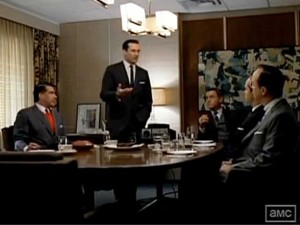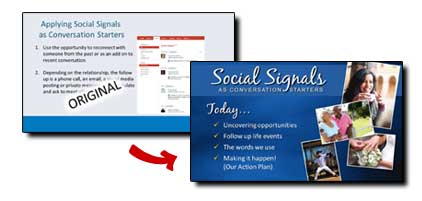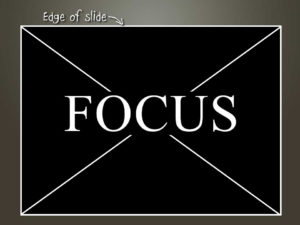Learning from Mad Men: Set the stage for your visuals
A great strategy for beginning a visual presentation is to open with a simple verbal narration. Use your words alone to set the stage for the message to come. Then, when you have properly prepared the audience, start your PowerPoint presentation. It is a dramatic technique that keeps the focus on you instead of your visuals.
In this clip from the long-running AMC television drama Mad Men, Don Draper, the brilliant 1960s advertising executive, is pitching representatives from Kodak. He is introducing them to his term for their new slide projector based on the wheel. As the executives settle into his office, Don is in no rush to get them to his slides — the equivalent of a 1960s PowerPoint deck. Instead, he begins with a story of his early days in advertising and how the concept of “new” and “nostalgia” can have such a powerful pull when delivering a message.
Only after he carefully sets the stage with a call to his audience’s emotions does he turn on the projector and begin a narration through his slides. Finally, after continuing to build the emotional pull with a series of warm and fuzzy family images, he introduces the term “Carousel” as the name for Kodak’s new product line. The image of the projector and the term “Carousel” are only on the screen for about 2 seconds. Yet the message is incredibly powerful and clear.
He has created the perfect verbal setup and then lets the slides serve to further illustrate and carry home the message. A different but very effective delivery strategy.
Watch the Mad Men clip here.




